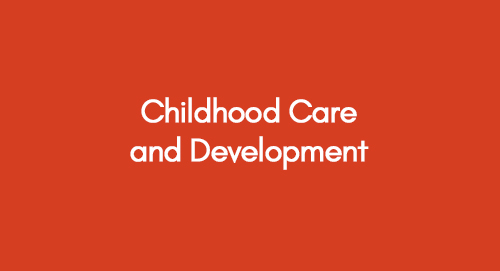
Childhood Care and Development | A Literature Review
May 30, 2022
Assessing the Impact of Digital Marketing in Generating High Customer Base of Online Retailers: Case Study of EBAY
June 1, 2022Introduction
The assignment provides an overview and insights into the experience with a patient and how it has resulted in the learning process. It also discusses the areas of improvement and actions that need to be taken to avoid any uncertain situations in the future for any such cases.
Gibbs Reflective Cycle
Description
Being a radiotherapy student on placement, I was supposed to have a radiotherapy pre-treatment chat session with cancer diagnosed patient. Like any other patient coming for a CT scan before radiotherapy, to whom I had to give a first-day chat, I had to think about who the patient could be, what would be their level of perception, and how I had to express myself. It was a challenge to stay prepared for any consequences that may occur and how adequately I should react to the possible situations.
Feelings
I introduced myself and then began the patient’s identification following the department protocol. Any examination or treatment regime in radiotherapy is unique to the individual, therefore, the patient needs to be identified before any treatment procedure (The Royal College of Radiologists et al, 2008). When I started explaining the process and reason for a CT scan, I realized the patient was showing signs of unawareness about their radiotherapy cancer treatment and was also emotionally unsettled for he said nobody informed him of having radiotherapy treatment. After being diagnosed with cancer and recommended radiotherapy for the treatment, this is probably the first point of contact a patient has with the radiotherapy department. Therefore, it was important for me to create a trust to make the patient feel more comfortable and reassured; for the diagnosis of cancer would be a shock to individuals who would exercise fear, and anxiety, feel frightened and would show natural reactions of uncertainty about tomorrow (Macmillan Cancer Support, 2017).
However, I made a sign to my supervisor who came and took the time to listen to the patient who could still not remember much after the diagnosis. He then recalled to the patient the meeting they had with the consultant and radiotherapy recommended for treating their disease then instructed me to continue with the explanation of the CT scan process after which we did the scan. With the patient reacting absurdly, I felt unsure of what I should do and say, but after my supervisor came and handled the situation, I felt a little relaxed. After the scan took place I went to my supervisor to show my concern, upon which he reassured me that all information is computed to the patient but they sometimes are unable to retain it for different reasons.
Evaluation
Before having this first-day chat, I was very confident having done many first-day chats. I was surprised by the reaction, for it was the first time to have such a challenging moment. I was also unsure about how to respond and did not feel experienced enough to deal with the situation alone. However, I was very careful with any verbal and non-verbal signs I showed because it was very important to effectively communicate with the patient as first impressions have a significant impact on the success of further communication (Skills You Need, 2014). Although I was surprised, I could still understand why some patients may easily forget about some information they receive when informed of their cancer diagnosis but not a CT scan schedule. I could not also understand immediately how a patient would come for an appointment without being informed of the reason, especially for a radiotherapy pre-treatment CT scan.
My level of anxiety increased more when my supervisor joined us wondering if he would decide to remain silent and ask me to continue the conversation which I was struggling to intervene at that moment. I think I should have acted quickly and in the same way as my supervisor for the situation to be dealt with effectively as the patient may feel that no interest is given to them personally which may result in them lacking the confidence in their treatment and care (Ramlaul and Vosper, 2013). Looking back, this experience had good and bad elements which have led to an increased understanding of my role within the radiotherapy team. I had to give more attention, evaluate the situation and provide more explanations. However, I feel that I did not accomplish the task (O’Daniel and Rosenstein, 2008).
Analysis
From this experience, I am currently more aware of the significance of being self-assured and demonstrating professional skills in practice if a similar situation occurs in the future and not feel just as if I cannot accomplish something because of my position or experience. The understanding I have gained from this experience implies that I am presently more mindful of the implications of acting quickly and the significance of acting in the best interest of the patient. Nevertheless, a detailed study on similar cases and also on how patients react in different settings would have helped in a better understanding.
Conclusion
Most patients feel alarmed when informed of a cancer diagnosis and this may bring huge nervousness and impact their daily life posing difficulties to healthcare. This point is further supported by findings by Williams et al. (2017) identifying that an absence of information about radiotherapy procedures can increase the anxiety patients may experience at the commencement of treatment. Despite these difficulties, one of the imperative tools that will give chance to understand more about this disease to provide quality healthcare is communication. Communication, on the other hand, can be challenging to healthcare professionals and patients, but if it is effective, patient satisfaction will be enhanced resulting in superior cancer care (McCaffrey, 2011, p.121). What I could have done better was to have gone through some literature on dealing with possible situations and examining some cases that have taken place in the past.
Action Plan
It was therefore imperative to know and consider such frequently occurring incidents so they could be managed in a much better way. Insights of patients’ reactions and cases on how differently they may react in different situations would have helped me in handling this particular case better. This is a fact, that practically experiencing such cases would add to the learning and knowledge but a theoretical understanding of previous cases would have still assisted. To improve for the next time, I would gather ample insights into how and where things may lead, and what effective measures could be adopted.
Conclusion
The assignment has focused on the learning outcomes of the particular scenario that is being faced. It has further inculcated the lags and inefficiency that were present and the measures that need to be taken to avoid any such circumstances. It is learned that a prior review of the past cases may assist in avoiding any uncertain circumstances.
References
Institute for Healthcare Communication (2014). Impact of Communication in Healthcare. Available from: http://healthcarecomm.org/about-us/impact-of-communication-in-healthcare. [Accessed 18 November 2017].
Macmillan Cancer Support (2017) Cancer and your feelings - Information and support. Available from: http://www.macmillan.org.uk/information-and-support/coping/your-emotions/dealing-with-your-emotions/cancer-and-your-feelings.html. [Accessed 15 November 2017].
McCaffrey RG. (2011). An educational program to promote positive communication and collaboration between nurses and medical staff. J Nurses Staff Dev.121-127.
National Cancer Institute (2014) Communication in Cancer Care. Available from: https://www.cancer.gov/about-cancer/coping/adjusting-to-cancer/communication-pdq. [Accessed 18 November 2017]
O’Daniel, M. and Rosenstein, A., H. (2008) Professional Communication and Team Collaboration. Available from: http://www.ncbi.nlm.nih.gov/books/NBK2637. [Accessed on 18 November 2017].
Ramlaul, A. and Vosper, V. (2013) Patient-Centered Care in Medical Imaging and Radiotherapy. E-Book. revised. Elsevier Health Sciences, ISBN 0702055239, 9780702055232
SkillsYouNeed (2014) what is communication. Available from: http://www.skillsyouneed.com/general/what-is-communication.html. [Accessed1 December 2017].
The Royal College of Radiologists, Society and College of Radiographers, Institute of Physics and Engineering in Medicine, British Institute of Radiology and National Patient Safety Agency (2008) Towards safer Radiotherapy. Available from: https://www.rcr.ac.uk/publication/towards-safer-radiotherapy. [Accessed 27 October 2017].
Williams, K., Blencowe, J., Ind, M., and Willis, D. (2017). Meeting radiation therapy patient’s informational needs through educational videos augmented by 3D visualisation software. Journal of Medical Radiation Sciences, 64(1), 35–40. [Accessed 20 November 2017].
Get 3+ Free Dissertation Topics within 24 hours?


















 Download PDF File
Download PDF File







